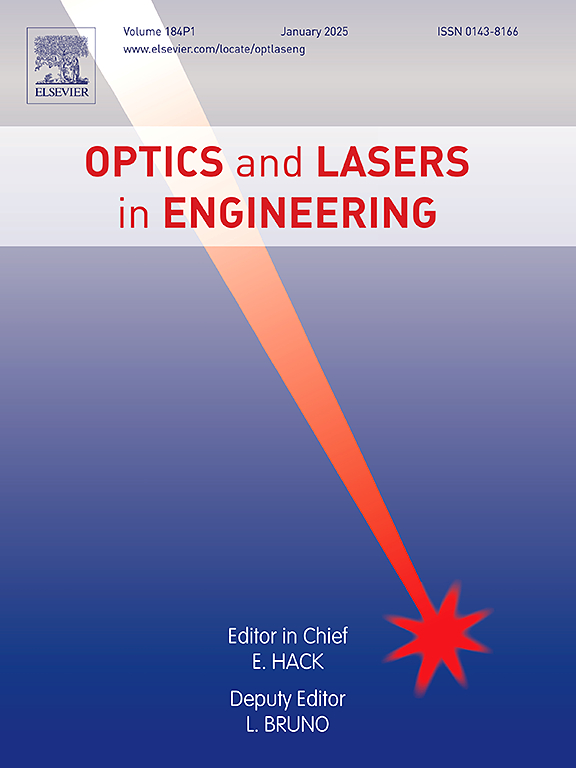Single-lens computational imaging system design for coupled aberration of blur and distortion
IF 3.5
2区 工程技术
Q2 OPTICS
引用次数: 0
Abstract
Blur and distortion are the primary degradation effects caused by optical aberrations in imaging systems. Traditionally, researchers often treat these two effects as independent issues, leading to separate investigations on deblurring and distortion correction algorithms. However, large field of view (FOV) infrared single-lens systems frequently exhibit coupled aberrations, where blur amplifies distortion and distortion exacerbates image information loss. In such cases, conventional methods often lead to significant optical model deviations and poor restoration performance. To address this issue, we propose an optical coupled imaging model based on point spread function (PSF) peak position mapping, which simulates these coupled effects and enhances the accuracy of large-FOV single-lens imaging simulation. Additionally, we propose a one-step restoration algorithm for coupled aberrations to simultaneously correct both blur and distortion. Our coupled imaging model is established using differentiable methods, enabling the formation of an end-to-end framework for optical, deblurring, and distortion correction parameters. Through a series of comparative experiments conducted with 40°-80° FOV and the fabrication of a prototype lens with a 19mm focal length, we demonstrate that our method significantly improves image quality in large-FOV single-lens systems and achieves high-resolution imaging in the 8–14μm infrared band.
模糊与畸变耦合像差的单透镜计算成像系统设计
模糊和畸变是成像系统中光学像差引起的主要退化效应。传统上,研究人员经常将这两种影响视为独立的问题,导致对去模糊和失真校正算法的单独研究。然而,大视场(FOV)红外单镜头系统经常表现出耦合像差,其中模糊放大畸变和畸变加剧了图像信息的损失。在这种情况下,传统的方法往往会导致光学模型的显著偏差和较差的恢复性能。为了解决这一问题,本文提出了一种基于点扩展函数(PSF)峰位映射的光学耦合成像模型,模拟了这些耦合效应,提高了大视场单镜头成像模拟的精度。此外,我们提出了一种对耦合像差的一步恢复算法,以同时校正模糊和畸变。我们的耦合成像模型是使用可微方法建立的,能够形成一个端到端的框架,用于光学,去模糊和畸变校正参数。通过40°-80°视场和19mm焦距原型透镜的对比实验,我们证明了我们的方法可以显著提高大视场单透镜系统的成像质量,并在8-14μm红外波段实现高分辨率成像。
本文章由计算机程序翻译,如有差异,请以英文原文为准。
求助全文
约1分钟内获得全文
求助全文
来源期刊

Optics and Lasers in Engineering
工程技术-光学
CiteScore
8.90
自引率
8.70%
发文量
384
审稿时长
42 days
期刊介绍:
Optics and Lasers in Engineering aims at providing an international forum for the interchange of information on the development of optical techniques and laser technology in engineering. Emphasis is placed on contributions targeted at the practical use of methods and devices, the development and enhancement of solutions and new theoretical concepts for experimental methods.
Optics and Lasers in Engineering reflects the main areas in which optical methods are being used and developed for an engineering environment. Manuscripts should offer clear evidence of novelty and significance. Papers focusing on parameter optimization or computational issues are not suitable. Similarly, papers focussed on an application rather than the optical method fall outside the journal''s scope. The scope of the journal is defined to include the following:
-Optical Metrology-
Optical Methods for 3D visualization and virtual engineering-
Optical Techniques for Microsystems-
Imaging, Microscopy and Adaptive Optics-
Computational Imaging-
Laser methods in manufacturing-
Integrated optical and photonic sensors-
Optics and Photonics in Life Science-
Hyperspectral and spectroscopic methods-
Infrared and Terahertz techniques
 求助内容:
求助内容: 应助结果提醒方式:
应助结果提醒方式:


